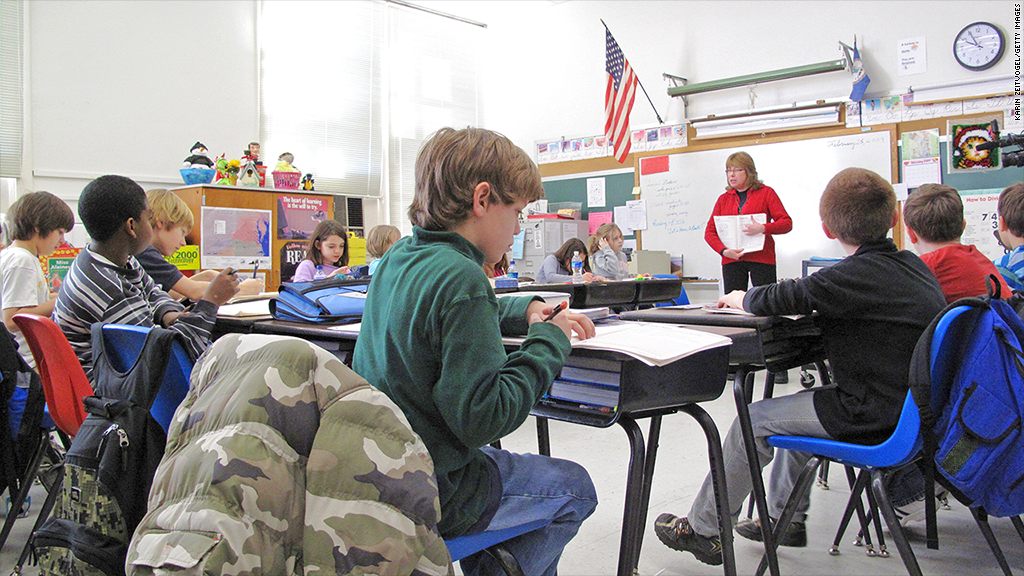
Kids may be the future of America, but you might not know it looking at how Washington spends its money.
A new report Thursday found that only 2% of the projected increase in federal spending over the next decade will be dedicated to programs benefiting children.
That works out to $26 billion out of $1.4 trillion.
And that $26 billion will go toward children's health spending, particularly in Medicaid, according to the report, published by the Urban Institute, a public policy think tank.
Meanwhile, spending on most other child-centric categories -- such as education and nutrition -- will fall.
Spending on K-12 education, for instance, will decline from $43 billion in 2013 to $38 billion in 2024. That's due in large part to the forced budget cuts known as the sequester.
Nutrition programs will also see a drop -- from $62 billion in 2013 to $56 billion in 2024.
If not kids, who? So where's the vast bulk of that $1.4 trillion spending increase going instead? Primarily to Medicare, Medicaid and Social Security as well as interest on the debt.
In fact, starting in 2017, Washington will spend more money on interest than on children, the report said.
"Without changes to current law ... we risk not only the well-being of our children, but the well-being of the nation," the report's authors said.
Over the past 50 years, federal money spent on the elderly has been considerably higher than that spent on children.
This despite the fact that the elderly have always made up a smaller share of the population than kids.
In 1960, for instance, Washington spent $4,000 per senior versus $270 per child. By 2011, it was $27,975 per senior versus $4,894 per child.

One explanation might be that seniors need more health care, which is expensive.
But Julia Isaacs, a lead author for the Urban Institute report, said that when you exclude health spending for both elders and children, the gap in spending between the generations is still large.
State funding narrows the gap: It does narrow considerably, though, when state and local spending are factored in since they skew more heavily to children, particularly through public school spending.
With federal, state and local spending combined, money spent per senior ($28,754) was only a little more than twice that spent per child ($12,770) in 2011, the report found.


